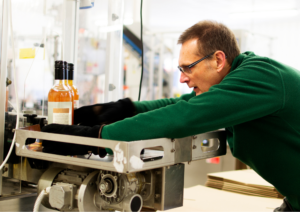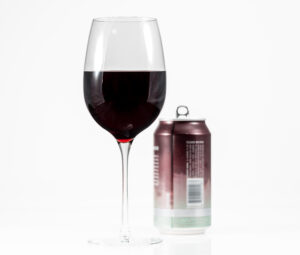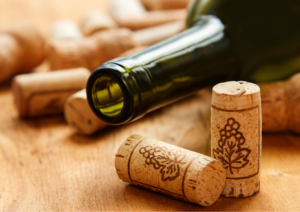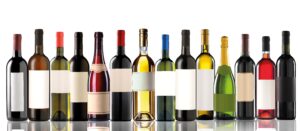Everything you need to know about bottling wine
24th June 2023
Much time and effort is spent by fruit producers and winemakers getting the growing, harvesting and pressing of grapes correct, along with the fermentation, processing and final filtration of the wine. Bottling however, requires just as much thought and consideration.

Bottling is a crucial part of the winemaking process. Mistakes made at this last step of wine production see all the previous care and attention wasted, providing the customer with a compromised product and a disappointing experience.
Bottling process
Bottling wine in the main part falls into two categories; bottling still, finished wine that is ready to drink, and tirage – which sees still wines with added sugar and yeast go into a sparkling wine bottle for secondary fermentation.
TPO stands for ‘Total Packaged Oxygen’ and refers to the amount of oxygen that is present in a wine after packaging which can have a significant impact on its quality, stability, and aging potential.
Oxygen has significant effects on the characteristics of wine. However, it is widely considered that oxygen at bottling is to be minimised as much as possible. Significant TPO can cause wine to deteriorate, leading to oxidation, loss of fruit flavours, and colour instability. Controlling and testing the TPO during bottling is a key way of maintaining quality. TPO is usually measured in mg/litre and there are special pieces of lab equipment available for piercing bottles to test this.

Still bottling
For still bottling, wine is usually ‘rough’ filtered, to remove larger suspended solids. This can be done with a crossflow filter, a centrifuge, a pad filter or a diatomaceous earth filter. The wine is then sterile filtered on the way to the bottling line to provide a stable product for the end consumer that won’t re-ferment or spoil once packaged. When the wine is ready for bottle, the bottling line will be cleaned, usually with caustic then with peracetic acid and finally steamed to ensure no yeast or bacteria are alive.
At this point, wine is pumped from the tank, through the filters and into the filler bowl. Bottles are loaded onto the line, inverted and rinsed using sterile filtered water. This is to ensure that any foreign objects that might have fallen into the bottles during the manufacturing process, such as chips of glass or objects like plastic or cardboard that might have entered the bottles in storage are rinsed out. Bottles are then conveyed into a station that evacuates the air from the bottle and purges them with an inert gas. Nitrogen or carbon dioxide are most commonly used. This is done so that as the bottles are filled, the wine is only in contact with an inert gas, rather than air which increases the TPO. The bottle is then filled to the correct volume via gravity. After this step, a gas levelling device injects a squirt of inert gas into the neck of the bottle and removes any excess wine that is above the correct fill height back to the fill bowl.
After this stage, a closure is added. The two main options for still wines are either a cork or a screwcap. For corking, a vacuum is pulled in the neck of the bottle as a cork is inserted to ensure that there is no positive pressure in the bottle. If the bottle undergoes a temperature change, the cork could be forced out if no vacuum is pulled. If a screwcap is added, a final purge of inert gas is blown into the headspace of the bottle before a screwcap is applied and reamed onto the bottle.
Tirage
Tirage is very similar to still bottling; however, as wine with yeast and sugar is being bottled, no filtration is required. Also, heavyweight sparkling bottles are used as they will withstand the up to eight bar pressure generated in the secondary fermentation. The concern about oxygen contact is a little less, as whilst mainly anerobic, live yeast will help mop up dissolved oxygen in the bottle. Next, a plastic insert called a bidule that helps catch yeast during riddling and ensures a perfect fit of the crown cap is inserted into the bottle mouth and finally a crown cap is crimped on top.

Alternative packaging processes
If the wine being bottled is a carbonated, Charmat-style wine, an isobaric filler is required. This uses a similar bottle purging method to still wine, evacuating the air and replacing it with an inert gas. However, the gas pressure is allowed to build in the bottle to just below the pressure that the tank is being held at. This allows the bottles to fill very gently under counter-pressure. This means the carbonation in the wine is kept as no breakout foam is allowed to be created. To further limit the breakout of foam, the bottles are filled at much colder temperatures to that when gravity filling. Between 1–4ºC degrees is normal.
Canning is also being used more for single serve still and sparkling wines. However, when considering canning wine, the decision to do so needs to start in the vineyard. Wine has a low pH which, over time can damage the liner that is sprayed onto the inside of aluminium cans to keep them inert. Interactions between the sulphur dioxide used to preserve the wine and the aluminium itself can cause a build-up of hydrogen sulphide which smells like rotten egg.
Bottle types
There are a few common bottle shapes used for still wine production; the classic Burgundy and Bordeaux for stills, and traditional ‘Champagne’ shape for sparkling are still firmly the industry standards, however some brands choose to use an unusual or bespoke shape to set their wines apart. This can work well, but adapting bottling, labelling and disgorging lines to fit a non-standard bottle could cost £20,000 or more. Also, unusual glass bottles are made far less frequently and may be discontinued with no notice, leaving the customer in the lurch, having built their brand around that particular bottle shape.
Recently, sustainability has become more of a concern for wineries. Making and then recycling glass is an energy intensive process, and both empty and full bottles are heavy for shipping which increases transport costs. There have been a few businesses that are developing lightweight plastic or lined cardboard bottles that are greener and easier to recycle. These are not yet widely filled, however.

Closures
As mentioned previously, there are a number of different closures available for still and sparkling wines. Generally, still wines will go under a cork or screwcap.
Screwcaps are the most common way to close bottles of still wine in Britain. There are several manufacturers offering either stock colours or bespoke, branded ones. Differing liners to limit or increase oxygen ingress are also available. Bespoke branding however often comes with long lead times and, minimum order quantities of around 60,000 units.
Corks can either be ‘natural’ and cut from once single piece of cork or ‘technical’ which uses a milled cork substance and a binding agent to stick them back together. There is also a hybrid option often referred to a as a 1+1, which has a disc of high-quality natural cork on the top and bottom glued to a centre section of technical cork. Different grades of corks allow different amounts of oxygen ingress.
Sparkling wines will have a wire hood added to secure the cork. These are available in many different colours and finishes. Much like screwcaps, bespoke options may have long lead times and large minimum order quantities.

Labelling
Along with bottle shape, labelling and label design is the best way to stand out on the shelf. It is always worth considering how easy the shape and size of label will be to apply on the bottle. For more complicated shapes and for sparkling neck labels it is well worth the extra expense of printing a few hundred blank labels so that they can be thoroughly tested before a full run is printed.
Also, the label material being used needs to be considered. Many sparkling wines use a label that can withstand being wet, as they will be served in an ice bucket. This is less important for still wines. These waterproof labels are usually less sustainable though, as they contain a plastic backing.

